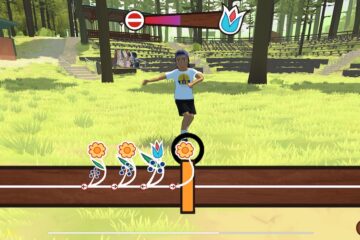More than airtime: Documentary producers search for new frontiers of engaging audiences
During a conference at the U.S. Institute of Peace Feb. 28, makers of documentaries about human rights discussed the techniques and challenges of using digital media to gain a following for a cause.
The Media That Moves Millions conference was the fourth in a series about the use of media in global diplomacy sponsored by the Independent Television Service, which produced the women’s rights documentary Half The Sky. The documentary aired on PBS in October 2012.
In her opening remarks, ITVS CEO Sally Fifer praised the film and other independent media projects. “Independent media is an alternative to silence,” Fifer said.
Half The Sky director and co-producer Maro Chermayeff said the project began with modest ambitions.
“We knew we were not doing an advocacy piece per se. We were telling stories and letting those stories inform you, and yes, motivate you,” said Chermayeff. She noted that both she and Nicholas Kristof, who wrote the book that the film is based on with his wife Sheryl WuDunn, had always pictured the TV effort as a centerpiece to a larger Half the Sky movement. That movement includes a “Women and Girls Lead” campaign that involves extensive global outreach advocating for women’s rights.
“I do think public media viewers are hungry for a different level of content,” Chermayeff said. But she noted the importance of reaching beyond public media’s typical audience. Through platforms such as YouTube, Half the Sky‘s producers are also sharing 75 additional pieces of video content, each under five minutes in length.
Game Time
To branch out further, Half the Sky is looking beyond video, enlisting nonprofit video-game designer Games For Change to create a Facebook game and mobile games based on the TV series. The Facebook game, which launches March 4, operates under a “freemium” model, under which the producers estimate 97 percent of players will play for free and the remaining three percent will elect to pay for special in-game privileges such as increased health bars. Most of those funds will be donated to nonprofits that support Half the Sky, while 20 percent will pay for the game’s operating costs.
The projected revenue breakdown of the freemium model is based on that of similar games from Zynga, which designed the mega-popular freemium Facebook games FarmVille and Words With Friends and is helping to distribute the Half The Sky game.
Players of the Facebook game assume roles of women fighting to escape oppressive situations of the kinds featured in the TV series. They play minigames and decide what to say when engaging their communities. Along the way, they are prompted to donate to nonprofits whose missions relate to the tasks they are trying to complete.
The first level of the game, for instance, asks players to help an Indian woman find medicine for her sick daughter; at the end of the level she learns that she could have prevented her daughter’s sickness by obtaining a vaccination. The game then prompts the player to donate to an organization working to vaccinate youth in India.
“In games, players hate to feel that you are quizzing them. They want to feel like there is some choice,” said Asi Burak, co-president of Games for Change, as he demonstrated the game’s first level at the conference. The game allows players to take various paths to the same outcome, rather than be steered through one “correct” choice.
Kristof said he has taken to heart the importance of inspiring empathy to engage audiences. For this reason, every episode of the TV program was built around inspiring moments, such as celebrity visits or concrete improvements in the life of its subject, and “ended in triumph, angels singing,” he said. He said he wished that Half The Sky had gone further in its efforts to impart empathy by branding itself with a more uplifting subtitle.
Breaking the Catch-22
But Kristof said that even an excess of empathy can fail to engage news media. “There’s a global agenda” to international news reporting, he said, and trying to cover something not on that agenda can be a catch-22. “What’s difficult is to get something [that’s] off that agenda and eventually move it on.” Social media, Kristof said, is “one way of breaking that catch-22.”
One documentary that succeeded, for better or worse, in doing so was KONY 2012, a half-hour online film by the nonprofit Invisible Children, launched in spring 2012. The video, which sought to publicize the name of international war criminal Joseph Kony in order to lead to his arrest, exploded virally and was viewed hundreds of millions of times within a week of its debut.
While the massive and unexpected success of KONY 2012 did result in some legislative victories for the cause it championed, the publicity also backfired after Invisible Children came under scrutiny for how it spent its funds and also how it simplified the issues facing central Africa. Organization co-founder and KONY 2012 director Jason Russell publicly broke down a week after the video’s release and was detained by police after being found nude and screaming incoherently on the streets of San Diego.
Invisible Children CEO Ben Kessey, who was present at the conference, discussed the challenges of finding instant and overwhelming attention drawn to a cause.
“Your PR team needs to be bigger than one intern,” Kessey joked, and he noted that the reason the film was able to find unprecedented success among young viewers was because the nonprofit, led by young digital natives, knew how to “speak their language”.
KONY 2012‘s empathic hook was intended to “build a climate of positivity” around a U.S. effort to mobilize Kony’s arrest, Kessey said.





